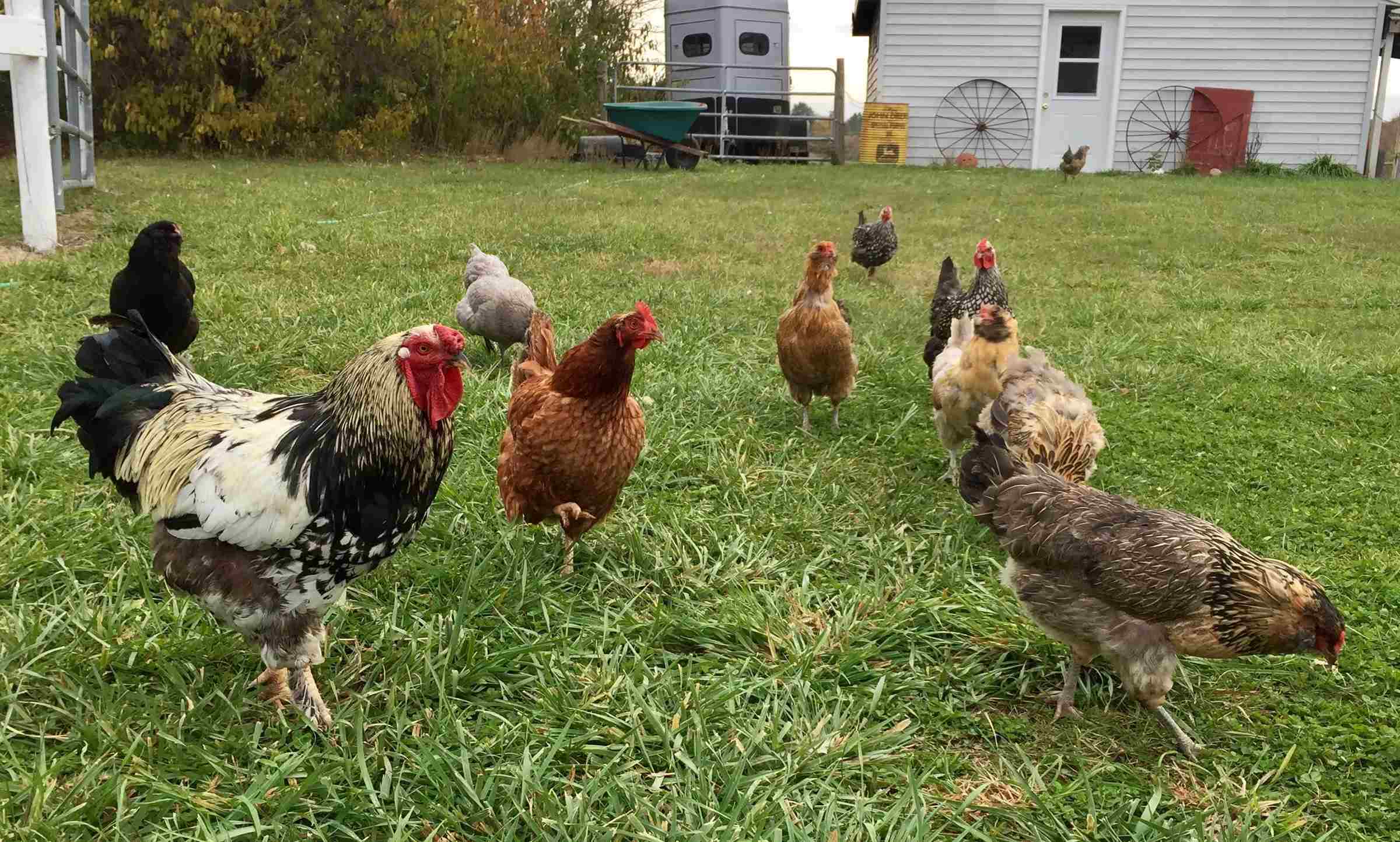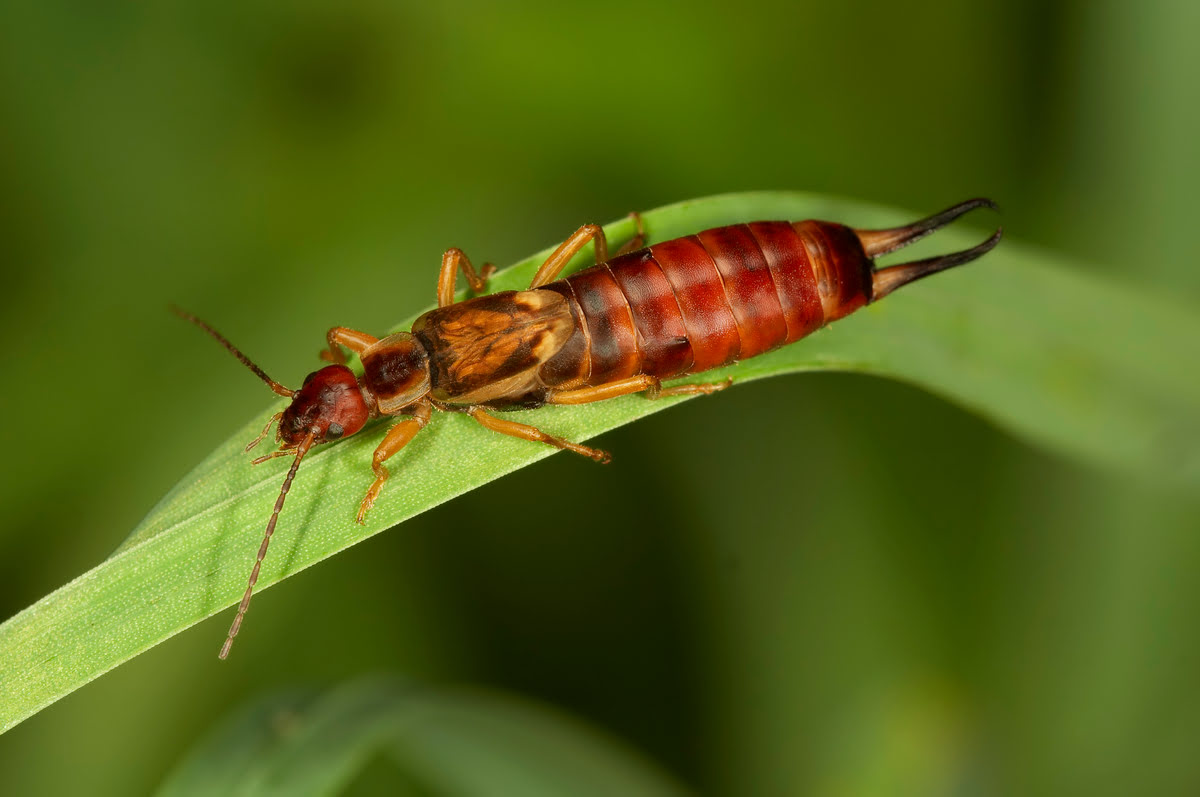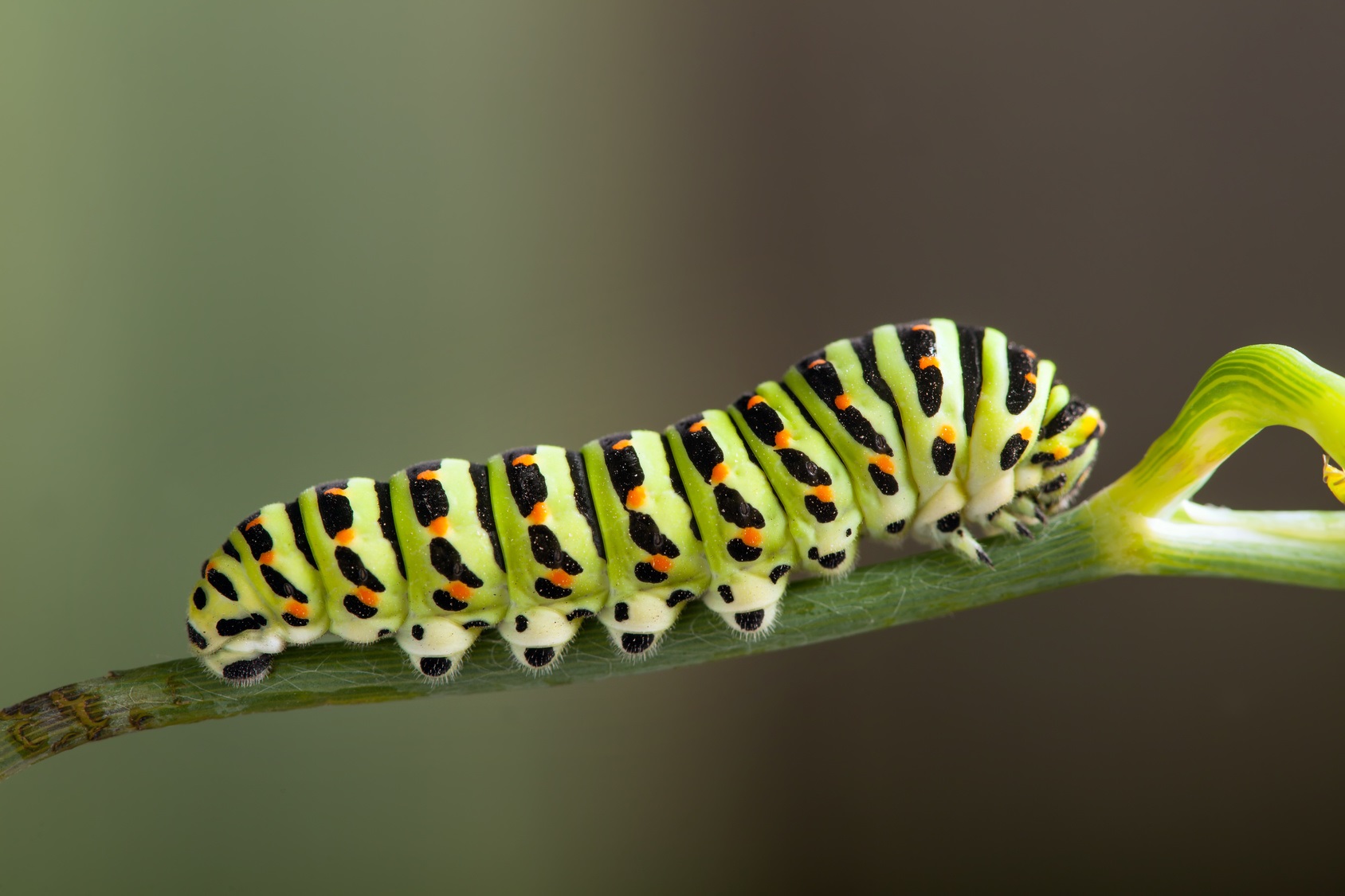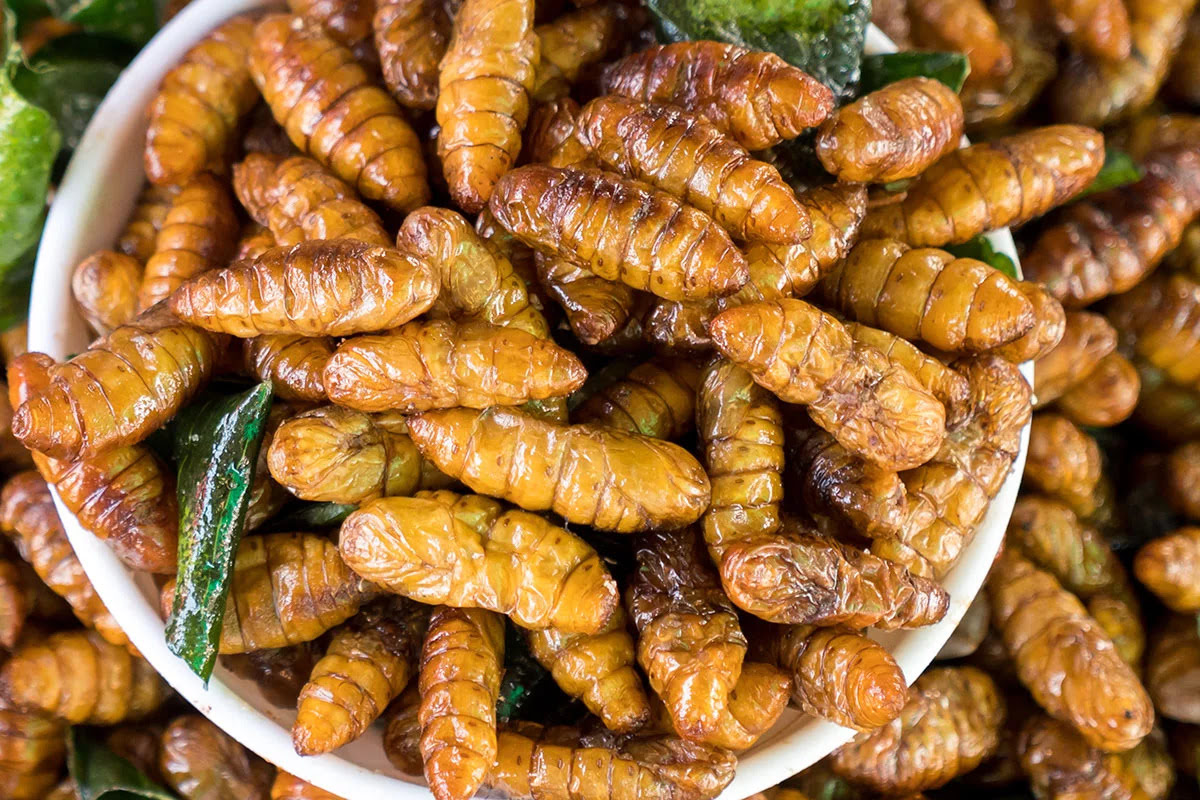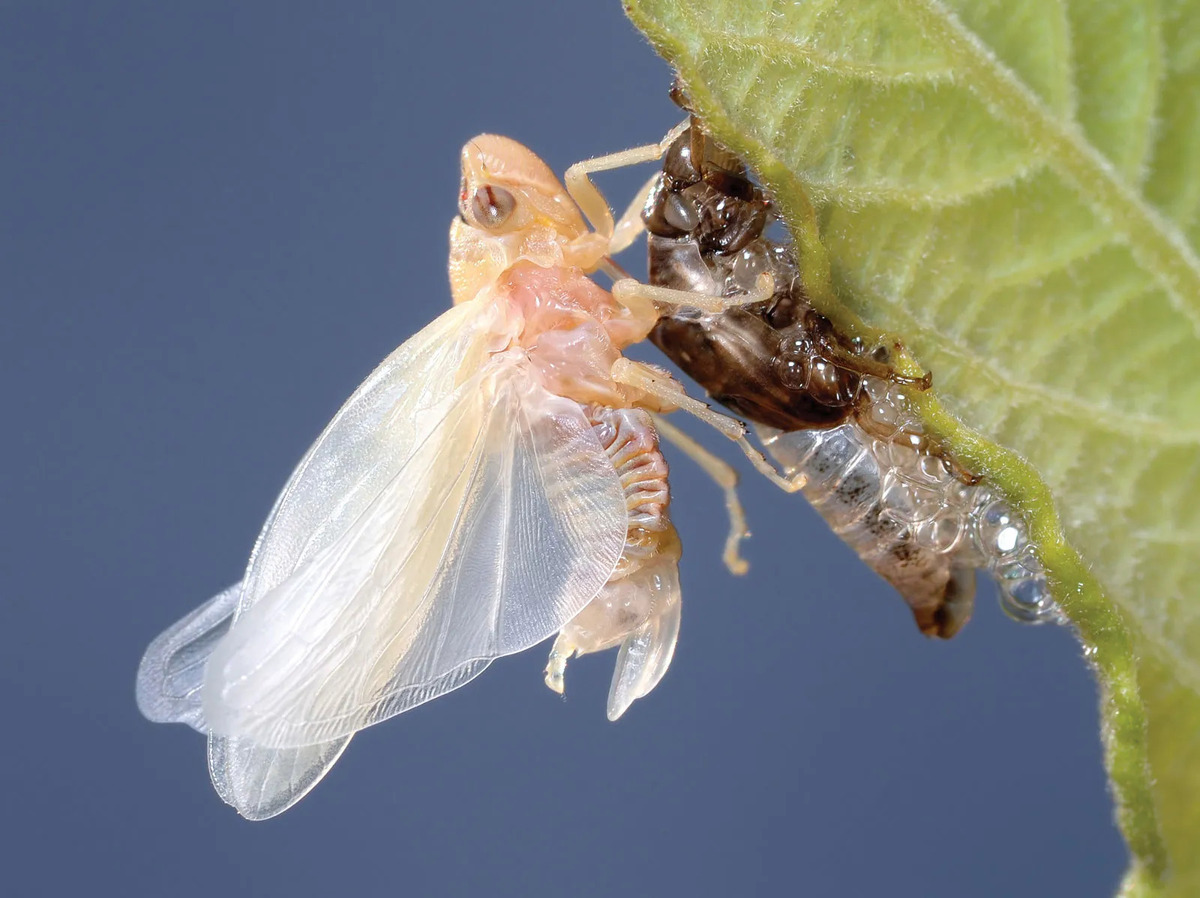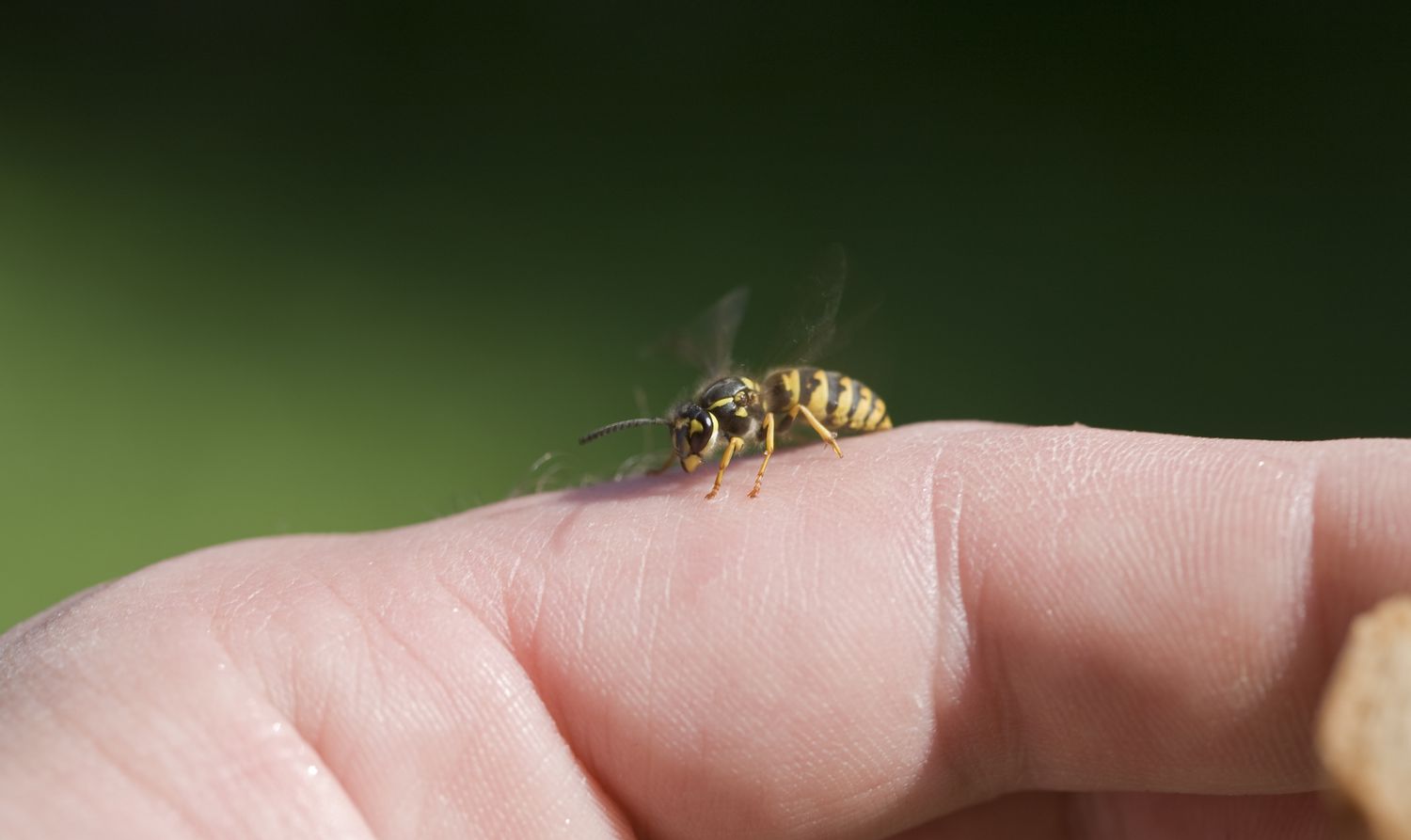Home>Gardening News and Trends>Latest News>What Insects Lay Eggs
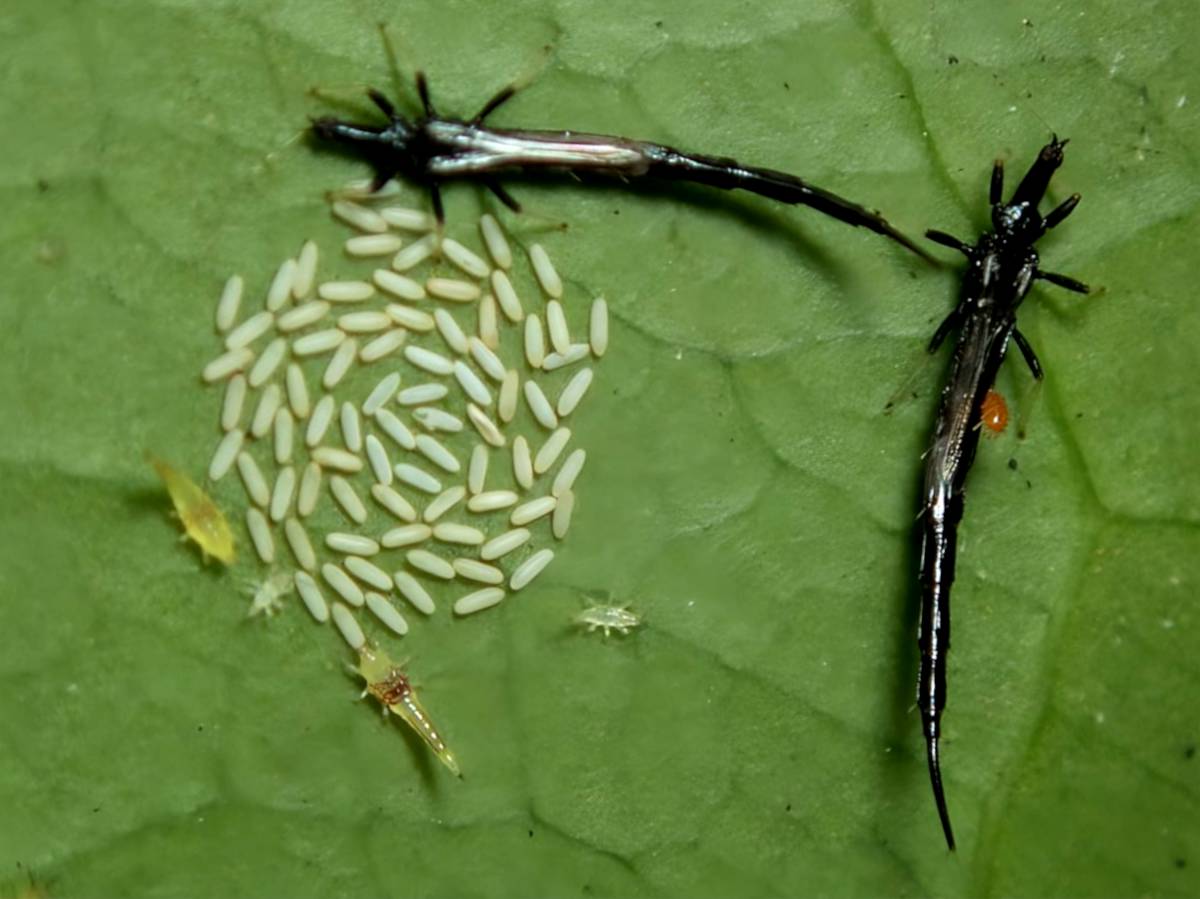

Latest News
What Insects Lay Eggs
Modified: January 22, 2024
Discover the Latest News about what insects lay eggs. Stay updated with the most recent findings and information on insect reproduction.
(Many of the links in this article redirect to a specific reviewed product. Your purchase of these products through affiliate links helps to generate commission for Chicagolandgardening.com, at no extra cost. Learn more)
Table of Contents
Introduction
Welcome to the fascinating world of insects and their reproductive abilities! Insects are incredibly diverse creatures that play essential roles in our ecosystems. Understanding their reproduction is key to comprehending their life cycles and behavior. At the heart of insect reproduction lies the process of laying eggs.
Insects have evolved various strategies for successful reproduction, and the act of laying eggs is a critical component of their reproductive cycle. From the tiniest ants to the majestic butterflies, insects have developed remarkable mechanisms to ensure the survival of their offspring.
By laying eggs, insects ensure the continuation of their species. These eggs hatch into larvae or nymphs, which undergo metamorphosis and eventually become adults. The diversity of insect eggs is astounding; they can vary in size, shape, color, texture, and even placement.
Understanding the different techniques and strategies that insects employ to lay their eggs is both intriguing and vital. Whether it’s depositing eggs directly onto a suitable food source or carefully selecting specific host plants, insects have evolved unique and efficient methods to enhance the chances of their eggs’ survival.
In this article, we will delve into the world of insect egg-laying. We will explore the fascinating strategies employed by a variety of insects, from the peculiar and complex to the simple yet effective. We will also examine the benefits and importance of insect eggs, as well as the factors that influence their egg-laying behavior.
So, prepare to be amazed as we uncover the secrets of insect reproduction and the incredible world of insect eggs!
Insect Reproduction
Insects, like all living organisms, have evolved various strategies for reproducing and passing on their genetic material to the next generation. The life cycle of an insect typically consists of distinct stages, including egg, larva or nymph, pupa, and adult. Reproduction occurs during the adult stage, and it is in this stage that most insect species engage in mating to produce offspring.
Unlike mammals, insects do not have internal fertilization. Instead, the male insect transfers his sperm to the female during mating. The female then stores the sperm in her body until she is ready to lay her eggs. This method of reproduction is known as indirect insemination.
Once the female has mated, she will seek out a suitable location to lay her eggs. This process varies depending on the species of insect and the environmental conditions in which they live. Some insects lay their eggs singly, while others deposit them in clusters or in specific patterns.
The number of eggs laid by an insect can vary greatly. Some species produce hundreds or even thousands of eggs, while others may lay only a handful. The size and shape of the eggs also vary, with some being barely visible to the naked eye, while others are large and distinct.
Insect eggs have protective outer coverings that help shield them from environmental factors such as desiccation, predators, and parasites. These protective coverings can be hard, soft, or even gel-like, depending on the species. They provide a safe environment for the developing embryo and help ensure its survival.
After the eggs are laid, they undergo a period of incubation, during which the embryo develops and eventually hatches into a larva or nymph. The exact duration of this stage varies greatly among different insect species and is influenced by factors such as temperature, humidity, and diet.
Once the larvae or nymphs emerge from their eggs, they go through a series of molts, shedding their exoskeletons and growing larger with each molt. This process continues until they reach their final stage of development, at which point they undergo metamorphosis or further growth to become adults.
Overall, the reproductive process in insects is a fascinating and intricate phenomenon. It showcases the remarkable adaptability and diversity of these remarkable creatures. By studying insect reproduction, scientists can gain insights into the complexities of life cycles, population dynamics, and the survival strategies employed by insects in their ever-changing environments.
Understanding Insect Eggs
Insect eggs are the starting point of an insect’s life cycle. They are the structures that house the embryo and serve as a protective covering until the offspring is ready to emerge. Understanding the characteristics and functions of insect eggs is essential in comprehending the reproductive strategies employed by different species.
First and foremost, insect eggs come in a wide array of shapes, sizes, and colors. They can be spherical, oval, cylindrical, or elongated, depending on the species. The size of the eggs varies greatly, ranging from microscopic to several millimeters in diameter. Some insect eggs are hardly visible to the naked eye, while others are large and easily identifiable.
The external appearance of insect eggs can also be diverse. They may have sculpted patterns, intricate designs, or smooth surfaces. Some eggs have structures like spikes or filaments that aid in adhesion to surfaces or provide protection against predators.
The inner structure of insect eggs is just as fascinating. Inside the egg, the developing embryo is surrounded by specialized tissues that protect and nourish it. These tissues may include yolk, which provides sustenance for the growing embryo, as well as protective layers that shield the developing insect from the external environment.
Insect eggs have evolved to be resistant to desiccation and physical damage, ensuring the survival of the embryo within. The hard outer covering of some eggs provides mechanical protection, while others have adaptations to prevent desiccation, such as waxy coatings or gelatinous substances that retain moisture.
The duration of incubation, or the time it takes for an egg to hatch, varies greatly among insect species. It can range from a few days to several weeks or even months, depending on environmental factors such as temperature, humidity, and availability of resources.
Understanding the characteristics of insect eggs is not only fascinating from a biological standpoint but also plays a crucial role in pest management and conservation efforts. By identifying and monitoring insect eggs, scientists and researchers can gain insights into the occurrence and distribution of different species, as well as develop strategies to control or protect against harmful or invasive insects.
Overall, insect eggs are remarkable structures shaped by millions of years of evolution. They serve as the first stepping stone in the life cycle of insects and contribute to their incredible diversity and success as a group of organisms.
Laying Eggs in the Insect World
The process of laying eggs, or oviposition, is a crucial step in the reproductive cycle of insects. It is during this phase that the female insect deposits her eggs in a suitable location that provides essential resources for the survival and development of the offspring.
The method of egg-laying can vary among different insect species and is influenced by factors such as habitat, behavior, and available resources. Some insects lay their eggs directly on or near the food source that will sustain the developing larvae. This ensures that the emerging offspring will have immediate access to the necessary nutrients.
Other insects have more complex and specific egg-laying strategies. For example, some species lay their eggs on host plants that serve as food sources for the larvae. These plants may have evolved specific adaptations to attract the female insect and provide optimal conditions for egg-laying. In some cases, the female insect can detect the presence of suitable host plants through chemical cues or visual cues.
Insects that undergo complete metamorphosis, such as butterflies and beetles, have distinct preferences for the type of substrate on which they lay their eggs. Some butterflies, for instance, lay their eggs on specific plant species that will serve as the primary food source for the hatching caterpillars. This behavior ensures the survival and progression of the species by utilizing available resources efficiently.
Some insects choose more unconventional egg-laying sites. There are species that lay their eggs in water, be it freshwater ponds or stagnant water bodies. The eggs are designed to withstand aquatic environments and will hatch into larvae that are adapted to an aquatic lifestyle. Other insects may prefer to lay their eggs in decaying organic matter, soil, tree bark, or even inside the bodies of other organisms.
Insects employ a range of techniques and adaptations to ensure the success of egg-laying. Some species possess ovipositors, specialized structures that allow the female to insert her eggs into tight spaces or hard substrates. Ovipositors can be long and slender, like those in certain wasps, or short and stout, like those found in many beetles.
The timing of egg-laying is also crucial for the survival and reproductive success of the female insect. Some species synchronize their egg-laying with seasonal changes or the availability of resources. This can be seen in insects that lay their eggs during specific periods when suitable host plants are abundant, or when environmental conditions are most favorable for the development and survival of the offspring.
Overall, the diversity of egg-laying strategies in the insect world is vast and captivating. Insects have evolved a multitude of adaptations to ensure the survival and continuation of their species. By studying these remarkable behaviors, we gain insights into the complex and intricate web of life that exists in the insect realm.
Unique Egg-laying Strategies
The world of insects never ceases to amaze with its wide array of unique and ingenious egg-laying strategies. From the peculiar to the awe-inspiring, insects have evolved remarkable adaptations to ensure the survival of their offspring. Let’s explore some of these fascinating techniques.
One remarkable strategy is seen in parasitic wasps. These wasps locate specific hosts, such as other insects or spiders, and inject their eggs directly into the body of the host. The developing wasp larvae then feed on the host from within, eventually emerging as adults. This adaptation ensures a ready food source for their young while minimizing the risk of predators or competition.
Another extraordinary example is found in the insect order Dermaptera, commonly known as earwigs. Female earwigs take great care in creating underground nests for their eggs. They excavate chambers in the soil and line them with saliva and waste material to create a protective environment. The female then carefully tends to the eggs, defending them against potential threats, and ensures their survival until they hatch.
Insects that lay their eggs on or inside other organisms are also fascinating. Take the case of botflies, a type of fly that deposits its eggs on mosquitoes. When the mosquito bites a potential host, the eggs transfer to the unsuspecting victim, where they hatch and burrow into the skin. The developing larvae then feed on the host’s tissue until they mature and emerge.
Some insects showcase intricate architectural skills in their egg-laying process. Leafcutter bees, for example, use pieces of leaves to construct cells within their nests. They meticulously cut and shape sections of leaves, carrying them back to their nests and using them to line the brood cells. The female then lays a single egg in each cell and seals it, ensuring the protection and development of the offspring.
Water-dwelling insects, such as water striders, employ unique strategies to lay their eggs. These insects create floating platforms made of silk and their own secretions, on which they deposit eggs. This strategy allows the eggs to remain above the water’s surface and protects them from predators or submersion. The floating platforms provide a safe and stable environment for the developing eggs until they hatch.
Egg-guarding is another intriguing adaptation observed in certain species. For instance, male stick insects take on the responsibility of guarding the eggs after mating with a female. They attach the cluster of eggs to their bodies or hold them between their legs, protecting them from potential predators or environmental hazards. The male stick insect ensures the proper incubation and survival of the eggs until they hatch.
These are just a few examples of the captivating and diverse egg-laying strategies found in the insect world. Each demonstrates the incredible adaptations that insects have evolved over millions of years to enhance the survival and reproductive success of their offspring. Studying and understanding these unique strategies allows us to appreciate the sheer complexity and beauty of the natural world.
Benefits and Importance of Insect Eggs
Insect eggs play a vital role in the natural world, offering a range of benefits and contributing to the overall balance and functioning of ecosystems. While often small and unassuming, these tiny structures have significant impacts on the environment and various organisms within it.
One key benefit of insect eggs lies in their contribution to biodiversity. Insects are the most diverse group of animals on Earth, and their eggs represent the starting point of their life cycles. Each species of insect has its own unique preferences for egg-laying sites, host plants, or hosts. The diversity of insect eggs helps sustain the remarkable array of species found in ecosystems, supporting the web of life and promoting a healthy and resilient environment.
Insect eggs also serve as a crucial food source for many other organisms. A wide range of animals, including birds, reptiles, amphibians, and other insects, rely on insect eggs as a vital part of their diet. They provide essential nutrients and energy, contributing to the survival and growth of these organisms.
In addition to being a direct food source, insect eggs indirectly support other aspects of food webs. Many insects play essential roles as pollinators, aiding in the reproduction of flowering plants. The eggs of these insects provide the foundation for future generations, ensuring the continued pollination of various plant species and the production of fruits, seeds, and other plant-based resources.
Furthermore, insect eggs contribute to nutrient recycling and decomposition processes. Some insects lay their eggs on decaying organic matter or in soil, where the hatching larvae assist in breaking down and recycling nutrients. They feed on organic material, accelerating decomposition and releasing valuable nutrients back into the ecosystem.
Insect eggs also have economic importance in various industries, including agriculture and forestry. While some insect species may be considered pests, damaging crops or trees by feeding on them, their eggs provide valuable information for monitoring and managing infestations. By identifying and monitoring eggs, farmers and forest managers can assess the presence and intensity of pest populations, implementing appropriate control measures to minimize damage.
Lastly, the study of insect eggs contributes to scientific research and our understanding of biological systems. Researchers closely examine the structure, development, and behavior of insect eggs to gain insights into reproductive strategies, population dynamics, and evolutionary processes. This knowledge further enhances our understanding of the intricate relationships between organisms and their environments.
Overall, the benefits and importance of insect eggs extend far beyond their tiny size. They are fundamental to the functioning and health of ecosystems, supporting biodiversity, providing food for various organisms, contributing to nutrient cycling, and impacting human activities. Recognizing their significance deepens our appreciation for the remarkable and essential role that insects play in our world.
Examples of Insects that Lay Eggs
The insect world is incredibly diverse, with thousands of species employing various methods of egg-laying. Here, we will explore a few examples of insects that exhibit unique and fascinating egg-laying behaviors, showcasing the range of strategies seen in different species.
Butterflies and moths, belonging to the order Lepidoptera, are known for their intricate and specific egg-laying habits. Many species are highly selective in choosing the right host plants for their young. For instance, the Monarch butterfly lays its eggs exclusively on milkweed plants, which serve as the primary food source for the caterpillars.
Ants, part of the order Hymenoptera, have a particularly interesting method of egg-laying. The queen ant holds the entire responsibility of laying eggs. She can lay thousands, or even millions, of eggs during her lifetime. Ant eggs are usually small and white, and they are cared for and nurtured by the worker ants within the colony, ensuring the survival and growth of the next generation.
The praying mantis, an insect known for its predatory behavior, exhibits a unique egg-laying strategy. Female mantises deposit their eggs inside a protective case called an ootheca. This frothy mass contains numerous eggs and serves as a shield against environmental conditions and predators. The ootheca is attached to a suitable surface, usually a plant stem or a structure, until the eggs inside hatch.
Dragonflies and damselflies, belonging to the order Odonata, exhibit diverse egg-laying strategies. Female dragonflies deposit their eggs on or near water bodies, often selecting vegetation or other objects above the water’s surface. They aim to ensure that the hatched nymphs have easy access to water for their aquatic stage of development. Damselflies, on the other hand, often insert their eggs directly into plant tissue, such as underwater plant stems or lily pads.
Bees, part of the order Hymenoptera, are renowned for their role as pollinators and honey producers. Female solitary bees, such as mason bees, lay their eggs in preexisting cavities, such as hollow plant stems or woodpecker holes. They construct individual cells within these cavities and fill them with provisions, usually pollen and nectar, before laying a single egg in each cell. This ensures that the developing larvae have a reliable food source until they mature.
These examples represent just a fraction of the incredible diversity of insect egg-laying behaviors. Each species has evolved specific adaptations to optimize the chances of their offspring’s survival. By studying these examples, we gain a deeper appreciation for the intricate and remarkable reproductive strategies employed by different insects.
Factors Affecting Insect Egg-laying Behavior
The process of egg-laying in insects is influenced by a variety of factors, ranging from environmental cues to internal physiological conditions. Understanding these factors provides insights into the intricacies of insect reproductive strategies. Here, we will explore some key factors that affect insect egg-laying behavior.
Environmental conditions play a significant role in determining when and where insects lay their eggs. Temperature, humidity, light levels, and seasonal changes all impact egg-laying behavior. Some insects have specific temperature requirements for egg development, ensuring optimal conditions for their offspring. Others time their egg-laying to coincide with the availability of essential resources, such as specific host plants.
Host availability and suitability also greatly influence egg-laying behavior. Insects that have specialized relationships with specific hosts, either as food sources or as sites for egg deposition, carefully select the appropriate plants or organisms. They often possess sensory adaptations that enable them to detect chemical cues or visual signals indicating the presence of suitable hosts.
Predation and competition exert pressure on insects, influencing where and when they lay their eggs. Some insects have evolved strategies to minimize the risk of predation by selecting hidden or well-protected sites for egg-laying, such as underground burrows or inside plant tissues. Additionally, competition with other individuals or species may prompt insects to disperse their eggs or select alternative egg-laying sites to avoid overcrowding or resource depletion.
Physiological factors within an individual insect can also impact egg-laying behavior. The reproductive maturity and condition of the female play a crucial role in determining when and how many eggs she will lay. For example, factors such as nutrition and mating status can affect the timing and quantity of egg production. In some species, males may even release certain substances or engage in courtship behaviors that influence the female’s readiness to lay eggs.
Genetic and evolutionary factors contribute to the diversity of egg-laying behaviors observed among different insect species. Natural selection, over time, favors individuals that possess traits and behaviors that enhance the survival and reproductive success of their offspring. This includes traits related to egg-laying, such as adaptations for selecting optimal hosts, utilizing specific oviposition sites, or protecting eggs from predators.
Environmental disturbances, such as habitat alteration or climate change, can also influence insect egg-laying behavior. Insects may need to adjust their behavior in response to changing environmental conditions, such as shifting temperatures or availability of resources. These changes can impact the timing or location of egg-laying and may have implications for population dynamics and species interactions.
Overall, a multitude of factors, including environmental cues, host availability, predation, competition, physiological conditions, genetics, and environmental disturbances, influence the egg-laying behavior of insects. By studying and understanding these factors, scientists can gain valuable insights into the reproductive strategies of different species, contributing to our broader understanding of insect biology and the intricate relationships between organisms and their environments.
Conclusion
Insect egg-laying is a fascinating and intricate process that plays a crucial role in the reproduction and survival of these diverse and remarkable creatures. From the strategic selection of egg-laying sites to the unique adaptations employed by different species, insects have evolved a variety of strategies to ensure the successful development of their eggs and the continuation of their species.
Understanding the characteristics and behaviors associated with insect eggs provides valuable insights into the intricate web of life that exists in the natural world. It allows us to appreciate the astonishing diversity of insect species and their remarkable ability to adapt to different environments and ecological niches.
The study of insect eggs also has practical applications in various fields. From pest management to conservation efforts, a deeper understanding of egg-laying behaviors can help us monitor and control harmful or invasive insect populations while protecting those that are beneficial to ecosystems.
Additionally, recognizing the importance of insect eggs in food webs and nutrient cycling highlights their critical role in maintaining ecosystem health and functioning. These tiny structures serve as a unique and important food source for many organisms and contribute to the balance of ecological systems.
As we continue to explore and uncover the intricacies of insect egg-laying, we gain a deeper appreciation for the diversity, complexity, and beauty of the natural world. The remarkable strategies employed by insects to ensure the survival of their offspring exemplify the incredible adaptability and resilience of these organisms.
By further researching and understanding the factors that affect insect egg-laying behavior, we can continue to expand our knowledge of insect biology, population dynamics, and the impacts of environmental change. This knowledge is crucial for effective conservation practices, management of pests, and the preservation of delicate ecosystems.
In summary, insect egg-laying is a fascinating and essential aspect of insect reproduction. It showcases the remarkable adaptations, strategies, and interrelationships within the insect world, highlighting the wondrous tapestry of life that surrounds us.

